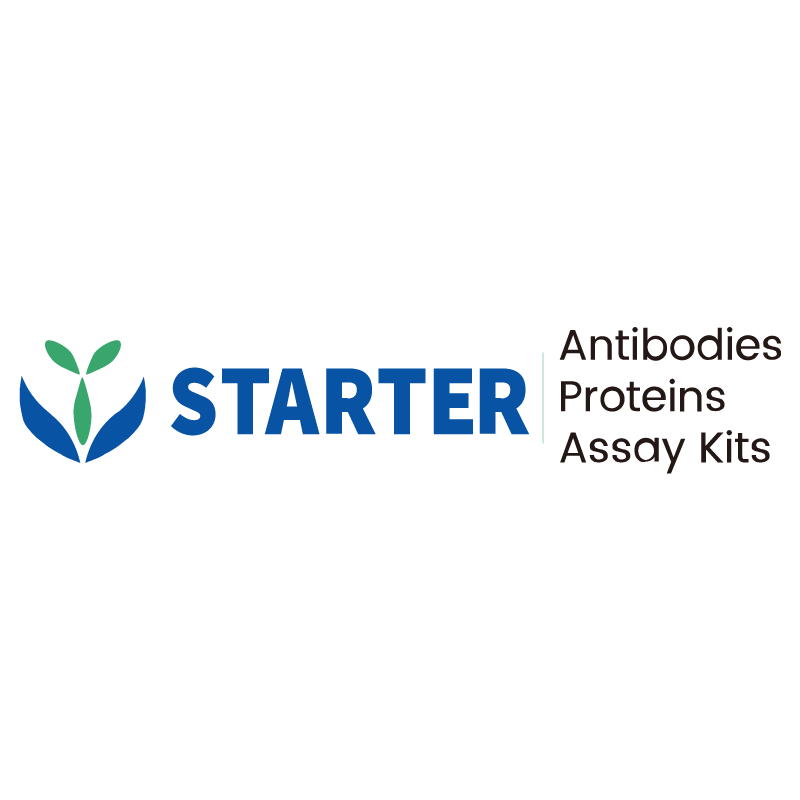IHC shows positive staining in paraffin-embedded human kidney. Anti-AQP2 antibody was used at 1/500 dilution, followed by a HRP Polymer for Mouse & Rabbit IgG (ready to use). Counterstained with hematoxylin. Heat mediated antigen retrieval with Tris/EDTA buffer pH9.0 was performed before commencing with IHC staining protocol.
Product Details
Product Details
Product Specification
| Host | Rabbit |
| Antigen | AQP2 |
| Synonyms | Aquaporin-2; AQP-2; ADH water channel; Aquaporin-CD (AQP-CD); Collecting duct water channel protein; WCH-CD; Water channel protein for renal collecting duct |
| Immunogen | Synthetic Peptide |
| Location | Cell membrane |
| Accession | P41181 |
| Clone Number | SDT-2149-19 |
| Antibody Type | Recombinant mAb |
| Isotype | IgG |
| Application | IHC-P, IF |
| Reactivity | Hu, Ms, Rt |
| Positive Sample | Human kidney, mouse kidney, rat kidney |
| Purification | Protein A |
| Concentration | 0.5 mg/ml |
| Conjugation | Unconjugated |
| Physical Appearance | Liquid |
| Storage Buffer | PBS, 40% Glycerol, 0.05% BSA, 0.03% Proclin 300 |
| Stability & Storage | 12 months from date of receipt / reconstitution, -20 °C as supplied |
Dilution
| application | dilution | species |
| IHC-P | 1:500 | Hu, Ms, Rt |
| IF | 1:500 | Hu, Ms, Rt |
Background
Aquaporin-2 (AQP2) is a water channel protein located in the apical cell membranes of the kidney's collecting duct principal cells and in intracellular vesicles. It is encoded by the AQP2 gene and is the only aquaporin regulated by vasopressin. AQP2 plays a crucial role in urine concentration and body water homeostasis by facilitating water reabsorption from the primary urine into the bloodstream. Vasopressin binds to receptors on the cell surface, triggering a signaling pathway that moves AQP2-containing vesicles to fuse with the plasma membrane, thus increasing water permeability. This process is regulated both in the short term (minutes) through vesicle trafficking and in the long term (days) through changes in AQP2 gene expression. AQP2 is also regulated by food intake, with fasting reducing its expression independently of vasopressin. Dysfunction of AQP2, such as mutations in the AQP2 gene, can lead to nephrogenic diabetes insipidus, a condition characterized by excessive urination and dehydration.
Picture
Picture
Immunohistochemistry
IHC shows positive staining in paraffin-embedded mouse kidney. Anti-AQP2 antibody was used at 1/500 dilution, followed by a HRP Polymer for Mouse & Rabbit IgG (ready to use). Counterstained with hematoxylin. Heat mediated antigen retrieval with Tris/EDTA buffer pH9.0 was performed before commencing with IHC staining protocol.
IHC shows positive staining in paraffin-embedded rat kidney. Anti-AQP2 antibody was used at 1/500 dilution, followed by a HRP Polymer for Mouse & Rabbit IgG (ready to use). Counterstained with hematoxylin. Heat mediated antigen retrieval with Tris/EDTA buffer pH9.0 was performed before commencing with IHC staining protocol.
Immunofluorescence
IF shows positive staining in paraffin-embedded human kidney. Anti-AQP2 antibody was used at 1/500 dilution (Green) and incubated overnight at 4°C. Goat polyclonal Antibody to Rabbit IgG - H&L (Alexa Fluor® 488) was used as secondary antibody at 1/1000 dilution. Counterstained with DAPI (Blue). Heat mediated antigen retrieval with EDTA buffer pH9.0 was performed before commencing with IF staining protocol.
IF shows positive staining in paraffin-embedded mouse kidney. Anti-AQP2 antibody was used at 1/500 dilution (Green) and incubated overnight at 4°C. Goat polyclonal Antibody to Rabbit IgG - H&L (Alexa Fluor® 488) was used as secondary antibody at 1/1000 dilution. Counterstained with DAPI (Blue). Heat mediated antigen retrieval with EDTA buffer pH9.0 was performed before commencing with IF staining protocol.
IF shows positive staining in paraffin-embedded rat kidney. Anti-AQP2 antibody was used at 1/500 dilution (Green) and incubated overnight at 4°C. Goat polyclonal Antibody to Rabbit IgG - H&L (Alexa Fluor® 488) was used as secondary antibody at 1/1000 dilution. Counterstained with DAPI (Blue). Heat mediated antigen retrieval with EDTA buffer pH9.0 was performed before commencing with IF staining protocol.


